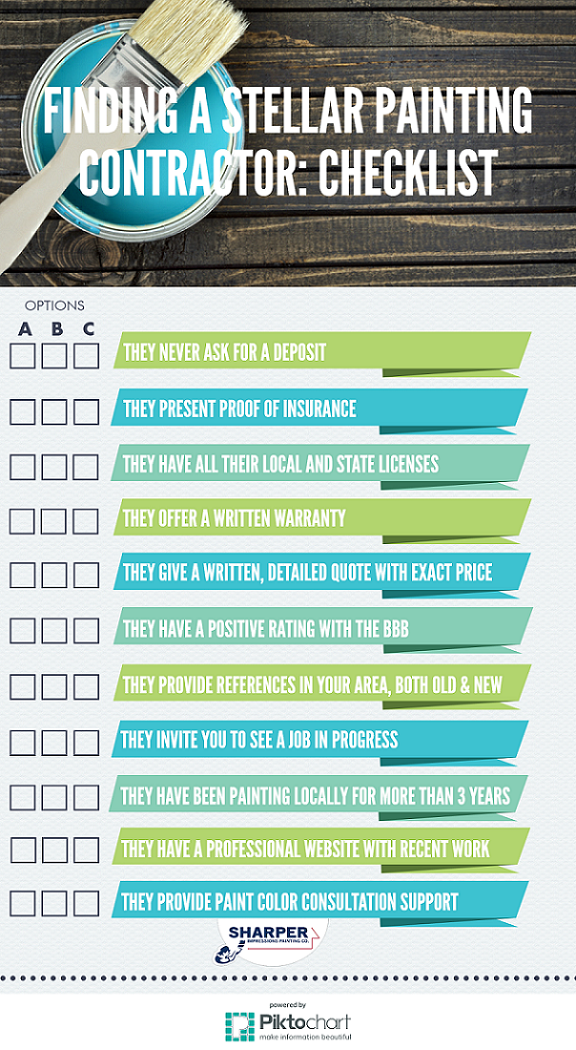A Guide To Different Painting Strategies: Discovering The Very Best Suitable For Your Requirements
A Guide To Different Painting Strategies: Discovering The Very Best Suitable For Your Requirements
Blog Article
Authored By-Hessellund Mullins
When choosing a paint technique that matches your style, the array of choices can be both exciting and frustrating. Each method has its distinct features, providing distinct advantages based on your creative preferences and goals. So, before you pick up your brushes and start developing, let's discover the interesting globe of painting methods to help you navigate with the sea of possibilities and locate the one that absolutely speaks with your artistic heart.
Checking Out Watercolor Painting
If you're aiming to dive into the world of painting, why rule out checking out watercolor strategies? Watercolor painting is a stunning tool that offers an one-of-a-kind and delicate method to express your creativity. Among the key benefits of watercolors is their transparency, allowing light to travel through the paint and show off the paper, developing luminescent and heavenly impacts.
To begin your watercolor trip, you'll require a few fundamental supplies: watercolor paints, brushes, watercolor paper, and a scheme. Begin by explore different brush strokes, layering shades, and having fun with the amount of water to attain different structures and results.
Do not be browse around this website to allow the paint circulation and mix on the paper, embracing the changability of watercolors.
As you get more experience, you can explore sophisticated methods such as wet-on-wet, wet-on-dry, dry cleaning, and lifting. Remember to practice consistently, research the works of other watercolor musicians, and most significantly, have fun with your paint trip!
Learning Polymer Techniques
When delving right into the realm of painting, grasping acrylic techniques can open up a world of dynamic possibilities for your creative expression. Polymer paints are known for their versatility, fast drying time, and lively shades. One vital strategy to master is layering. By using several layers of acrylic paint, you can create depth and richness in your art work.
Explore various brush strokes, from vibrant and expressive to delicate and detailed, to see how they can improve your paints.
An additional vital facet of acrylic paint is mixing. Acrylics can be easily combined on the canvas using a range of devices like brushes, sponges, and even your fingers. This enables you to effortlessly blend colors and develop smooth transitions between various tones.
In addition, do not neglect to discover the methods of dry brushing and splattering to add appearance and passion to your paintings.
Opening the Secrets of Oil Painting
Open the tricks of oil paint and uncover a rich and timeless tool that has actually captured the creativity of artists for centuries. Oil painting involves making use of pigments put on hold in drying oils, commonly linseed oil. This versatile tool allows for blending colors, developing abundant appearances, and accomplishing luminescent effects that can not be conveniently reproduced with other types of paint.
To start your oil painting journey, you'll require quality oil paints, brushes suitable for oil paint, a combination for mixing colors, and a surface to repaint on, such as canvas or wood. Unlike https://www.today.com/home/what-know-about-painting-room-black-t87976 , oil paints have a sluggish drying time, permitting greater adaptability in mixing and layering shades. This characteristic also allows musicians to deal with an item over a prolonged period, making changes and improvements as they go.
When collaborating with oils, remember to cleanse your brushes with solvent and use a well-ventilated area because of the fumes. Trying out different strategies like alla prima (wet-on-wet) or glazing to attain varied effects and unleash your imagination with this classic painting tool.
Conclusion
Now that you've explored different painting strategies like watercolor, acrylic, and oil, it's time to pick the one that speaks with you. Choose the method that straightens with your artistic objectives and preferences, whether it's the luminescent effects of watercolor, the vibrant colors of acrylic, or the mixing capabilities of oil. Experiment, have fun, and let your creativity circulation as you dive deeper right into the world of painting.
